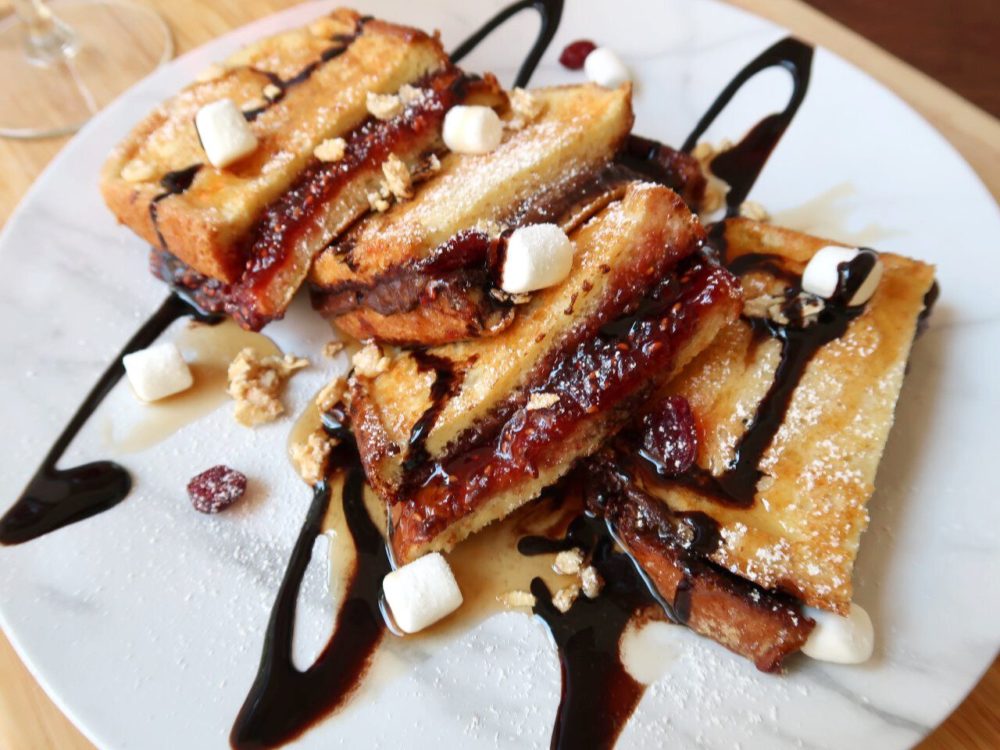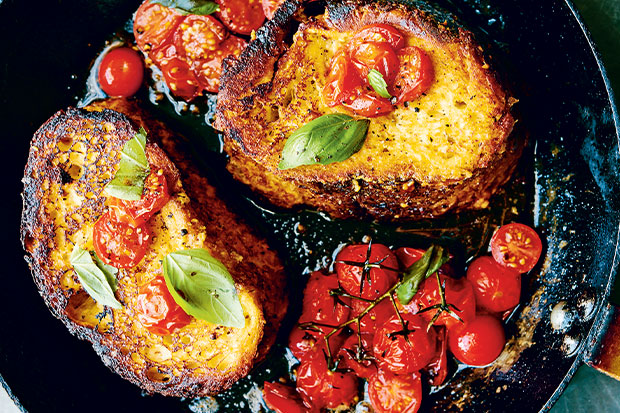French Toast: From Humble Beginnings to Culinary Star: A Guide to chicken breast recipes
Exploring the evolution of this classic dish and a surprising Margarita recipe pairing for the perfect brunch.

French toast, or pain perdu as it's known in France, is more than just a breakfast staple. It's a testament to resourcefulness, transforming stale bread into a delectable treat. This article explores the fascinating history of French toast, its diverse variations, and a unique culinary pairing: a vibrant Margarita recipe to elevate your brunch experience. Whether you're seeking classic comfort or innovative flavor combinations, prepare to rediscover the magic of French toast.
Table of Contents
A Brief History of French Toast
While the exact origins of French toast are debated, variations of the dish have been enjoyed for centuries. Apicius, a Roman cookbook from the 4th or 5th century, features a recipe remarkably similar to what we know as French toast today. The dish has evolved through various cultures and iterations, becoming a beloved breakfast staple worldwide. It’s a testament to culinary ingenuity, turning day-old bread into a satisfying and delicious meal. The French term 'pain perdu,' meaning 'lost bread,' beautifully captures the essence of rescuing bread from being discarded.
Across different regions, French toast takes on unique forms. In France, it's often simpler, using just bread, milk, and eggs. In America, it's common to find versions enriched with vanilla extract, cinnamon, and other spices. Each variation reflects local tastes and available ingredients, showcasing the versatility of this adaptable dish. From its ancient roots to its modern adaptations, French toast remains a timeless culinary treasure.
Interestingly, the name 'French toast' isn't consistently used around the world. In some regions, it goes by different names, such as 'eggy bread' or 'German toast.' This linguistic diversity highlights the dish's global appeal and its ability to adapt and thrive in various culinary landscapes. Regardless of the name, the fundamental concept remains the same: transforming stale bread into something extraordinary.
Even popular platforms like Hello Fresh recipes sometimes feature inspired takes on classic French toast, adding modern twists and convenient meal-kit solutions to this age-old favorite. This demonstrates the enduring relevance and adaptability of French toast in today's fast-paced culinary world.
The Perfect Classic French Toast Recipe
Creating the perfect classic French toast involves a careful balance of ingredients and technique. Start with good-quality bread, preferably challah, brioche, or Texas toast, which are sturdy enough to soak up the custard without becoming soggy. The custard itself is crucial; a mixture of eggs, milk (or cream for extra richness), vanilla extract, cinnamon, and a pinch of salt forms the foundation of flavor.
Soaking the bread properly is key. Dip each slice into the custard for a few seconds, ensuring it's thoroughly coated but not saturated. Over-soaking will result in mushy French toast, while under-soaking will leave it dry. The ideal soaking time depends on the bread's density; experiment to find what works best.
Cooking the French toast to golden-brown perfection requires a moderately heated griddle or skillet. Use butter or a combination of butter and oil to prevent sticking and impart a rich flavor. Cook each slice for 2-3 minutes per side, or until golden brown and cooked through. Serve immediately with your favorite toppings, such as maple syrup, fresh berries, whipped cream, or powdered sugar. This classic recipe provides a solid foundation for exploring more adventurous variations.
This aspect is particularly relevant when considering chicken breast recipes
in a broader context.
Beyond the Basics: French Toast Variations
Once you've mastered the classic French toast recipe, the possibilities for experimentation are endless. For a decadent treat, try adding Nutella or cream cheese to the center of two bread slices before dipping them in the custard and cooking. This creates a delightful stuffed French toast that's sure to impress. Consider adding fruit to the custard itself – mashed bananas, blueberries, or chopped strawberries can infuse the French toast with natural sweetness and flavor.
For a richer, more indulgent version, use heavy cream instead of milk in the custard. This will result in a silkier texture and a more pronounced flavor. You can also experiment with different spices, such as nutmeg, cardamom, or even a touch of ginger, to create unique flavor profiles. A dash of orange zest can also add a bright, citrusy note.
Another popular variation is crème brûlée French toast. This involves baking the soaked bread in a custard-filled dish, then topping it with sugar and caramelizing it with a kitchen torch, mimicking the classic dessert. It’s a more time-consuming process, but the results are truly spectacular. Don't be afraid to explore international variations as well. For instance, some cultures use coconut milk or pandan extract in their French toast, resulting in distinct and exotic flavors.
This aspect is particularly relevant when considering chicken breast recipes
in a broader context.

Savory French Toast: A Dinner Delight
French toast isn't just for breakfast or brunch; it can also be a surprisingly delicious and satisfying dinner option. Savory French toast involves using herbs, spices, and cheese in the custard instead of sweet flavorings. Think of it as a blank canvas for creating a variety of delicious dishes. For example, you could add grated Parmesan cheese, chopped chives, and a pinch of garlic powder to the custard, then serve the French toast with a fried egg and a side of roasted vegetables.
Another popular savory variation involves using sourdough bread and topping the French toast with avocado, sliced tomatoes, and a sprinkle of everything bagel seasoning. This creates a flavorful and satisfying meal that's perfect for a light dinner. You can also experiment with different types of cheese, such as Gruyère, cheddar, or even goat cheese, to create unique flavor combinations.
Savory French toast also lends itself well to vegetarian recipes. Consider using a vegetarian sausage or bacon alternative as a topping, or adding sautéed mushrooms and spinach to the custard. The possibilities are truly endless. To add a touch of sophistication, try serving savory French toast with a balsamic glaze or a drizzle of truffle oil. This elevates the dish and makes it suitable for a more formal dinner setting. Experimenting with different herbs and spices is key to unlocking the full potential of savory French toast. Rosemary, thyme, and oregano all work well, adding depth and complexity to the flavor profile.

The Margarita Recipe: A Perfect Brunch Pairing
While seemingly unconventional, a well-made Margarita can be a surprisingly delightful pairing for French toast, particularly for brunch. The acidity and citrus notes of the Margarita cut through the richness of the French toast, creating a balanced and refreshing experience. The key is to avoid overly sweet Margaritas; a balanced recipe with fresh lime juice is essential.
Classic Margarita Recipe:
- 2 oz Tequila (Blanco or Reposado)
- 1 oz Cointreau (or other orange liqueur)
- 1 oz Fresh Lime Juice
- Optional: Salt for the rim
Instructions:
- Salt the rim of a margarita glass (optional).
- Combine tequila, Cointreau, and lime juice in a shaker with ice.
- Shake well until chilled.
- Strain into the prepared glass filled with ice.
- Garnish with a lime wedge.
For a sweeter French toast, a spicier Margarita with a jalapeño slice added to the shaker can create an interesting contrast. Alternatively, a strawberry or mango Margarita can complement fruit-topped French toast beautifully. The possibilities are truly limitless when it comes to customizing your Margarita to perfectly match your French toast creation.
Experiment with different types of tequila to find your preferred pairing. Blanco tequila offers a brighter, more citrusy flavor, while Reposado tequila provides a slightly more complex and oaky taste. Consider adding a splash of agave nectar for extra sweetness if desired, but be mindful of maintaining the drink's overall balance. The freshness of the ingredients is paramount for a truly exceptional Margarita experience. A good margarita recipe can even be added to Hello Fresh recipes

Additional Resources & Information
Key Insights on French Toast & Margarita Pairing:
- Bread Choice Matters: Sturdy breads like challah and brioche are ideal for soaking up the custard without becoming soggy.
- Custard Composition: A balanced custard is crucial; experiment with different spices and extracts to customize the flavor.
- Soaking Technique: Properly soaking the bread is key to achieving the perfect texture.
- Savory Potential: Don't limit French toast to sweet applications; explore savory variations for dinner.
- Margarita Balance: A well-balanced Margarita with fresh lime juice is essential for a successful pairing.
- Flavor Complementarity: Consider the flavors of your French toast when choosing your Margarita recipe. Fruit-topped French toast pairs well with fruit Margaritas, while richer French toast may benefit from a spicier Margarita.
French Toast: A Culinary Comparison
| Aspect | Classic French Toast | Stuffed French Toast | Savory French Toast |
|---|---|---|---|
| Flavor Profile | Sweet, vanilla-cinnamon | Sweet with creamy filling (e.g., Nutella, cream cheese) | Savory, herby, cheesy |
| Main Ingredients | Bread, eggs, milk, vanilla, cinnamon | Bread, eggs, milk, vanilla, cinnamon, filling | Bread, eggs, milk, herbs, spices, cheese |
| Suitable Meal | Breakfast, brunch | Breakfast, brunch, dessert | Dinner, lunch |
| Complexity | Simple, quick | Moderate | Moderate |
| Dietary Considerations | Can be vegetarian | Can be vegetarian (check filling ingredients) | Can be vegetarian (check cheese and toppings) |
Key Concepts
Quick Breakfast Treat
Classic French toast is a simple and satisfying breakfast option for busy mornings.
- Easy to make
- Uses common ingredients
- Customizable with various toppings
Impressive Brunch Dish
Stuffed French toast elevates your brunch game with a decadent creamy filling.
- Visually appealing
- Rich and flavorful
- Perfect for special occasions
Dinner Reinvented
Savory French toast offers a creative and delicious alternative to traditional dinner recipes.
- Versatile
- Unique flavor combinations
- Vegetarian-friendly
Conclusion: The Enduring Appeal of French Toast
French toast, with its rich history and remarkable versatility, continues to captivate culinary enthusiasts worldwide. From its humble origins as a way to repurpose stale bread to its modern iterations as a gourmet brunch staple, French toast remains a timeless classic. By embracing creative variations, exploring savory applications, and finding unique pairings like the Margarita, you can unlock new levels of flavor and enjoyment. The future of French toast is bright, with endless possibilities for innovation and customization. So, grab your bread, eggs, and a shaker – it's time to rediscover the magic of French toast!